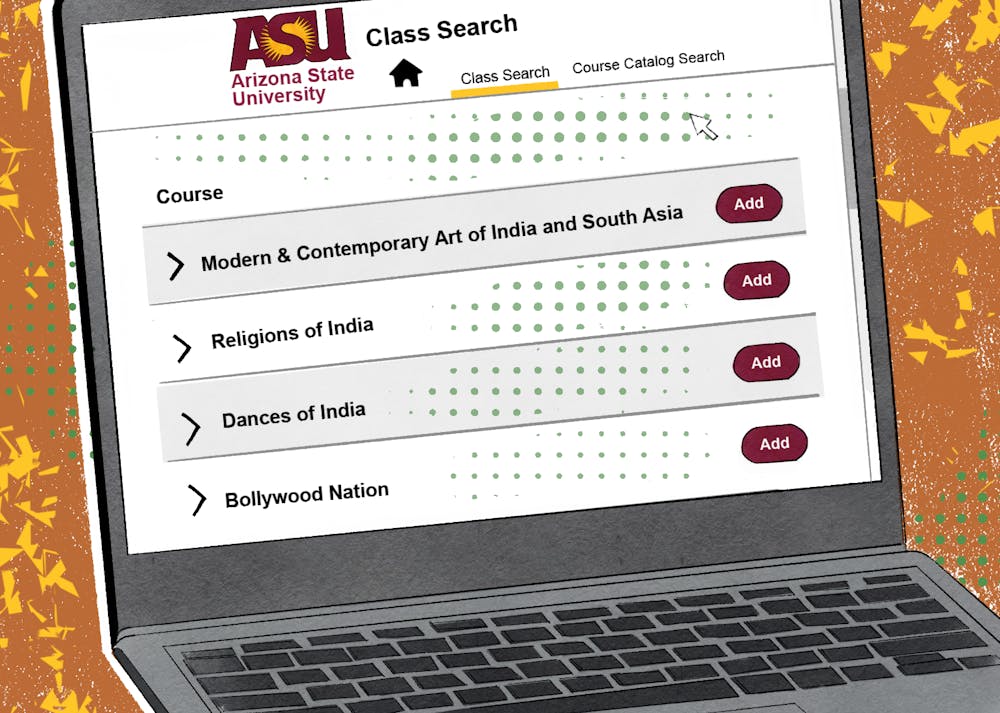This fall semester, ASU is welcoming new classes to the curriculum. These educational opportunities allow Sun Devils to learn about South Asian culture through the courses Modern and Contemporary Art of India and South Asia, the Bollywood Nation, the Dances of India and the Religions of India.
The University is continuously expanding its inclusivity on an academic scale to provide knowledge and representation for its students.
"I feel that any method to make people aware of any nation is a big step towards inclusivity and diversity, which is ASU’s mission," Rinku Das, the upcoming professor of Dances of India and owner of Nrityajyoti Dance Academy, said. "By doing that, the students will come closer to each other, and they will make an effort to understand each other's culture."
Several students have searched for a way to learn about their backgrounds. During his freshman year, Anish Verma, a senior studying political science, global studies, global health and applied quantitative science, expressed his own desire for a portrayal of his culture to the College of Liberal Arts and Sciences.
READ MORE: Insight: Navigating the Indian in Indian American
Verma reached out to college faculty and higher administration to see if new courses could be offered. At the time, the desired new courses couldn't be added due to a lack of time, money and faculty. It was encouraged to turn to other ways to bridge the academic gap through various ASU clubs and outside sources.
"For one of my degrees, I'm required to take a second language, and I'm not even taking any language that's being offered at ASU right now," Verma said. "I'm actually taking Hindi."
This push for representation will be seen next semester when students can learn about all types of perspectives, cultures, and aspects of South Asia.
The course Dances of India teaches Sun Devils about movements and dances ranging from contemporary to classical, as well as the historical, cultural and religious aspects of dancing.
"I'm trying to show how these dance forms are transforming from mythological stories to becoming more contemporary and addressing modern issues and how they're represented in Indian movies," Das said.
Das will be focusing on Kathak, a classical northern Indian dance, within the class. According to Das, the dance is important because it blends Hindu and Muslim cultures and temple traditions.
Outside of academics, Das also wants to create an Indian Dance Association. She welcomes students from any level of education and every student at ASU to bring a better understanding of South Asian dancing.
ASU has provided these new classes with professors who have knowledge and experience within their subject. Nilanjana Bhattacharjya, the professor of Bollywood Nation, has been trained in music and involved in helping representation in Bollywood films.
Bhattacharjya said she's excited to teach about these films and discuss the ways people are depicted or feel represented within the media.
Bollywood Nation focuses on the identity of Bollywood films because the genre has never been "geographically confined" and has always housed many cultures, according to Bhattacharjya.
"It's an interesting thing to think about what makes a movie Indian," Bhattacharjya said. "Is it just that they speak Hindi? How much English do they speak before it's not a Hindi movie anymore? What is a Bollywood movie?"
The classes dive deep into multiple characteristics of South Asia. It's a way for students to learn about their roots and culture and for others to learn about a different perspective of the world.
READ MORE: ASU Unified Society of South Asia hosts Hindu Celebration Garba and Raas
"Any new representation brings about new knowledge and brings about a new way of thinking," Das said. "It changes the perception of the students and they become more understanding because after all, we are one global family."
Edited by Katrina Michalak, Walker Smith and Caera Learmonth.
Reach the reporter at sjames51@asu.edu and follow @sennajames_ on X.
Like The State Press on Facebook and follow @statepress on X
Senna James is a Managing Editor at The State Press. She is in her 5th semester with The State Press working previously as Community and Culture Editor and Community and Culture reporter.




